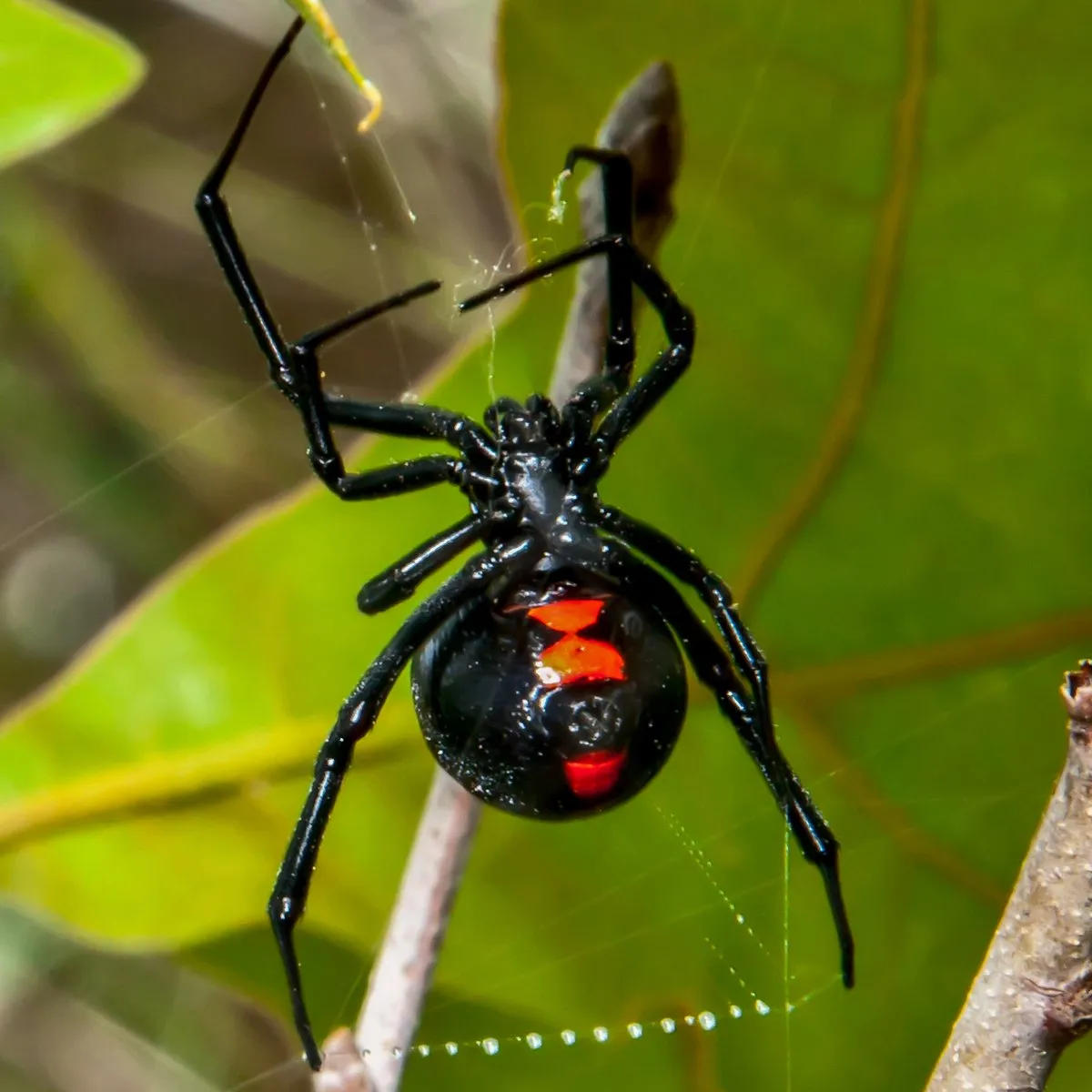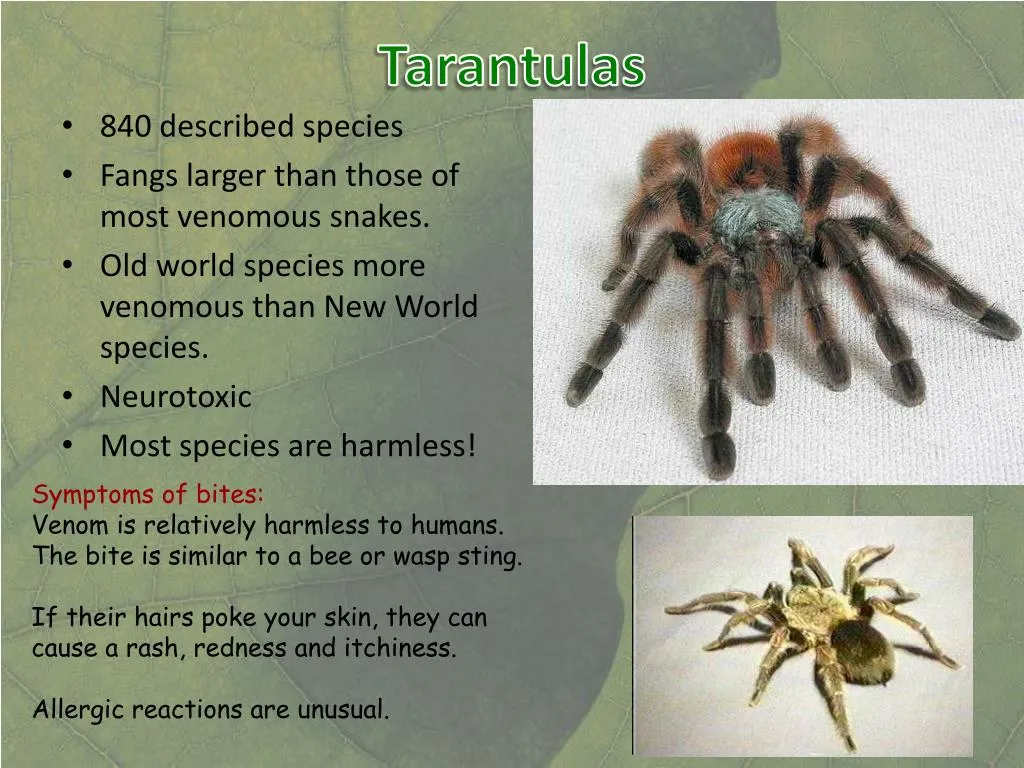Are Tarantulas Poisonous? Unveiling the Truth
The question of whether tarantulas are poisonous is a common one, often fueled by misconceptions and the intimidating appearance of these large spiders. The truth is more nuanced than a simple yes or no. Understanding the difference between venom and poison is crucial to answering this question accurately. This article delves into the facts, separating myth from reality, and providing a comprehensive guide to tarantula bites and their effects. We will explore what tarantulas actually possess, what happens if you’re bitten, and what steps you should take. Let’s uncover the answers to this fascinating and often misunderstood aspect of the tarantula world. This exploration aims to clarify the nature of these arachnids and provide you with a complete view.
Fact 1 Understanding Venom vs. Poison
The terms ‘venom’ and ‘poison’ are often used interchangeably, but in the context of tarantulas and other creatures, they have distinct meanings. Poison is a substance that is harmful when ingested, inhaled, or absorbed through the skin. Venom, on the other hand, is injected into the body through a bite or sting. This fundamental difference is key to understanding whether a tarantula is dangerous. Because tarantulas inject their harmful substances through their fangs, they are venomous, not poisonous. The mechanism of action—injection versus ingestion or absorption—is what defines the difference. Therefore, the correct term to describe a tarantula’s defense is venom, not poison. Knowing this distinction is essential for a correct understanding of how tarantulas affect humans and other animals.
The Difference Explained

To further clarify, consider how the substance enters the body. Poisons need to be ingested, inhaled, or absorbed through the skin to cause harm. Think of poisonous plants or certain chemicals. Venom, however, is delivered directly into the body through a bite or sting. Snakes, spiders, and bees are prime examples of venomous creatures. They use specialized structures to inject their toxins. This distinction affects how the toxins interact with the body and the types of treatments required. The delivery method makes all the difference in how harmful a substance is, and what kind of reactions it can cause.
Fact 2 Tarantula Venom Composition
Tarantula venom is a complex mixture of proteins, enzymes, and other compounds, designed to subdue prey. The exact composition varies depending on the species of tarantula, but generally, it contains neurotoxins, which affect the nervous system, and other substances that can cause localized pain and inflammation. The venom’s primary function is to immobilize prey, such as insects, small reptiles, and rodents, allowing the tarantula to feed. While the venom can be potent against these smaller creatures, its effects on humans are usually less severe. The venom is not intended to kill large animals, but rather to cause a temporary paralysis and discomfort, allowing the tarantula to feed without resistance.
What’s in Their Bite
The components of tarantula venom include a variety of toxins. Neurotoxins disrupt the normal function of the nervous system, leading to effects like muscle spasms and paralysis in prey. Cytotoxins damage cells, causing local tissue damage and inflammation at the bite site. Other compounds in the venom may have anticoagulant properties, preventing blood clotting, which can aid in the spider’s feeding process. The specific combination and concentration of these components determine the overall effect of the bite. While the components of the venom are complex, their effect on humans is usually not life-threatening. The reaction can vary based on species, individual sensitivity, and the amount of venom injected.
Fact 3 The Impact of a Tarantula Bite on Humans

The impact of a tarantula bite on humans is often exaggerated. While a bite can be painful, the effects are usually not life-threatening. Common symptoms include localized pain, redness, swelling, and itching at the bite site. Some individuals may experience muscle cramps, nausea, or a mild headache. The severity of the reaction depends on several factors, including the species of tarantula, the amount of venom injected, and the individual’s sensitivity. Most bites result in symptoms that resolve within a few hours to a few days. Seeking medical attention is generally not necessary unless severe symptoms develop or the person has an allergic reaction.
Symptoms and Severity
The most common symptoms include localized pain, which can range from a mild sting to a more intense burning sensation. Redness and swelling around the bite site are also typical. Other symptoms might include itching, muscle cramps, and in some cases, nausea or a headache. The severity of these symptoms varies significantly. In rare cases, a person may experience more severe reactions, such as difficulty breathing, rapid heart rate, or signs of a systemic allergic reaction. If such symptoms appear, immediate medical attention is crucial. For the majority of bites, symptoms are mild and will resolve on their own within a few days. Recognizing the symptoms and knowing how to respond is crucial.
Fact 4 Are Some Tarantulas More Dangerous Than Others
Yes, the danger level varies between different tarantula species. While most tarantulas have venom that is not particularly dangerous to humans, some species may have a more potent venom or exhibit more aggressive behavior. For example, Old World tarantulas (found in Asia, Africa, and Australia) are generally considered to have a more potent venom than New World species (found in the Americas). Their bites can be more painful and cause more significant local reactions. However, even within the same species, individual tarantulas may vary in their behavior and the amount of venom they inject during a bite. Always exercise caution when handling or encountering any tarantula.
Species-Specific Considerations

Understanding the specific species of tarantula is key to assessing the potential risk. Some species are known for their aggressive defense mechanisms and more potent venom. The African tarantulas are often cited as having a more painful bite, while others from the Americas are known for their urticating hairs, which cause skin irritation upon contact. Researching the specific species is essential if you are keeping or encountering one. Knowing the origin, behavior, and potential risks of each tarantula can help prevent unnecessary bites. Before interacting with tarantulas, it’s essential to learn about their natural habitat, feeding habits, and defensive behaviors.
Fact 5 What to Do If Bitten by a Tarantula
If you are bitten by a tarantula, the primary focus should be on treating the symptoms and preventing secondary infections. First, clean the bite area thoroughly with soap and water. Apply a cold compress to reduce pain and swelling. If the pain is significant, over-the-counter pain relievers can be used. Monitor the bite site for signs of infection, such as increasing redness, swelling, or pus. Although rare, if you experience more severe symptoms, such as difficulty breathing, chest pain, or signs of an allergic reaction, seek immediate medical attention. Most bites are mild and will heal on their own with proper care, however, it’s always best to be cautious.
First Aid and Medical Attention
After a tarantula bite, providing immediate first aid can help alleviate symptoms. Wash the bite area with soap and water to reduce the risk of infection. Apply a cold compress to the bite site to minimize pain and swelling. Elevating the affected limb can also help. Keep an eye out for any allergic reactions, such as difficulty breathing or hives. If you experience these symptoms, immediately seek medical assistance. If the bite is from a species with a potentially more potent venom or if the symptoms are severe, it’s essential to get professional medical care. Following these steps can provide relief and encourage a speedy recovery.
Conclusion Are Tarantulas Poisonous

In conclusion, tarantulas are venomous, not poisonous. Their bites can cause localized pain, but are usually not life-threatening to humans. Knowing the difference between venom and poison is essential for understanding the nature of tarantulas. Understanding the effects of a bite, including the species-specific differences and the appropriate first aid measures, can help to dispel common fears and provide a balanced perspective. While tarantulas may appear intimidating, their venom typically poses a minor threat to humans. It’s crucial to respect these creatures, handle them with care, and educate yourself about their behavior and potential risks. By understanding the truth about tarantulas, we can appreciate these fascinating creatures and manage our interactions with them safely and responsibly.
